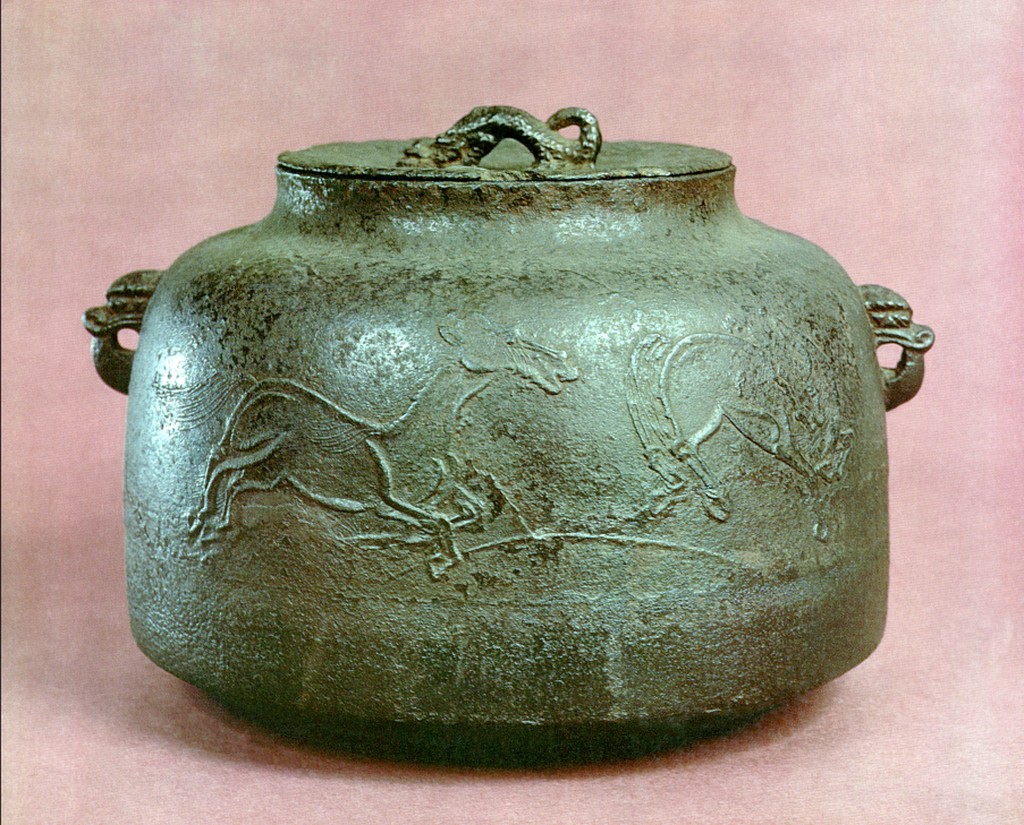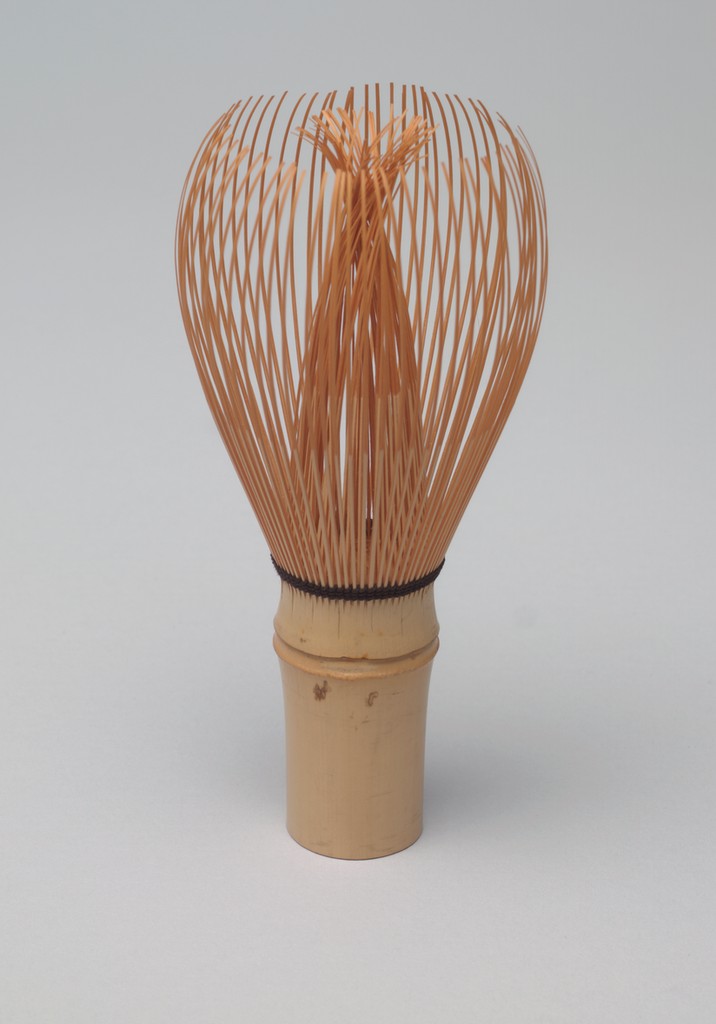The Japanese Tea Ceremony is a Japanese tradition that was first practiced during the Kamakura period (1192-1333). The ritual tea drinking ceremony and tea culture originated in China. A Buddhist monk named Myoan Eisai, who also practiced and expanded Zen Buddishnm in Japan, brought the Tea ceremony tradition into Japanese culture. In the beginning tea was first drunk as a medicinal beverage especially between the upper class which were people with power, like the priests.
Buddhist priest Eisa brought green tea seeds from China to Japan, which led to Japanese people to start making tea out of the seeds. Myoan Eisa became a big figure in Japan and was credited with beginning the tea tradition.
Tea is often served to family, friends, and associates. Tea ceremonies have two different gatherings which are formal (chaji) and informal (chakai). A chakai is very simple and offers hospitality that includes pastry, thin tea, and sometimes a very light meal. A chaji is more of a formal gathering and usually includes a full-course traditional multi-course Japanese dinner called kaiseki. Chaji’s also include desserts, thick and thin tea. Unlike the chakai, a chaji may last up to two to four hours.

Location: Kyoto (Japan)
Date: 17th Century
These ceremonies took place in Tea houses which were usually located in quiet areas with large gardens and a body of water as shown above. Having nature surrounding the tea house allowed Japanese people to build a stronger connection and feel at ease. The gardens were kept calm and simple to encourage a calm spirit. As shown in the picture, stones of different types of shapes and sizes were designed to make up the path that leads to the tea houses.

tea ceremony room at the Daitokuji
Location:
Kyoto Japan
Description:
Kopan Monastery, interior, overview
Traditional Japanese style rooms which are called washitsu, come with very unique interior design which includes tatami mats as flooring, sliding doors (Fusuma), Alcove (tokonoma) and many more. Tatami became more popular during the Muromachi period (1333-1573). Back then only wealthy people were able to afford Tatami mats that would cover the entire tea room and house. As Tatami slowly began to be more common in Japan, “they were found at virtually all Japanese homes until modern, wooden and carpeted floors started to replace them in recent decades”. Like in Tea ceremony room at the Daitokuji, tea rooms, the tea kettle is either heated over a portable brazier (fire) or in a sunken hearth built into the floor of the tea room but its all depending on the season.

tea ceremony kettle
Location:
Japan
Material:
iron
Period:
Muromachi
Repository:
Tokyo National Museum, Tokyo, Japan
Source:
Data From: The John C. and Susan L. Huntington Archive of Buddhist and Related Art, The Ohio State University
Tetsubin come in many different shapes and sizes, some are even passed down through generations. Like tea ceremonies, Tetsubin/kettles were also originated in China. Japanese people began to craft their own kettles, which later became a common household item.

Chasen
Work Type:
Design Objects
Date:
Design date: Before 1953
Material:
Bamboo
Description:
Displayed in the Japanese House exhibition, 1953. The whisk is a tea ceremony utensil.

Dish with Foliate Rim
Work Type:
Ceramics
Date:
Edo period, early 17th century
Location:
Japan, Gifu Prefecture
Material:
Stoneware with incised and combed design under copper-green glaze (Mino ware, Oribe type)
While preparing for the tea ceremony the host usually starts preparing tea for the guests. Some of the most important utensils used during the ceremony are the chasen, small dish and/or kettles. Each piece of equipment was carefully selected according to circumstance and has its specific place. It was a tradition for the host to serve a Japanese sweet before drinking the tea. Guests would often study the beauty of the bowl used to hold the green tea and appreciate its art and history.
So what is “Japan-ness”? We’ve seen multiple encounters of “Japan-ness” while learning about Japanese culture. China influenced Japan drastically, Due to Chinese culture, Tea ceremonies developed in Japan as a tradition over the years. The tea ceremony tradition became known globally especially in the western and people quickly began to adapt the same practices. Countries, cultures and society have been influenced tremendously.
bibliography:
- 17th C. Kyoto: Katsura Rikyu: Imperial Villa general view Tea hut. https://library.artstor.org/asset/ARTSTOR_103_41822003455548.
- tea ceremony room at the Daitokuji. https://library.artstor.org/asset/HUNT_56295.
- tea ceremony kettle. Place: Tokyo National Museum, Tokyo, Japan. https://library.artstor.org/asset/HUNT_57433.
- Ikkan Hiki, (Artist), Japanese. Design date: Before 1953. Chasen. Design Objects. Place: Museum of Modern Art (New York, N.Y.). https://library.artstor.org/asset/MOMA_11450005.
- Japanese. Edo period, early 17th century. Dish with Foliate Rim. Ceramics, Decorative Arts and Utilitarian Objects. Place: Asia Society Museum, New York, New York, USA, Asia Society: The Mr. and Mrs. John D. Rockefeller 3rd Collection, 1979.228, http://www.asiasocietymuseum.org. https://library.artstor.org/asset/AMICO_ASIAN_SOCIETY_103813433.
- Willmann, Anna. “The Japanese Tea Ceremony.” In Heilbrunn Timeline of Art History. New York: The Metropolitan Museum of Art, 2000–. http://www.metmuseum.org/toah/hd/jtea/hd_jtea.htm (April 2011)